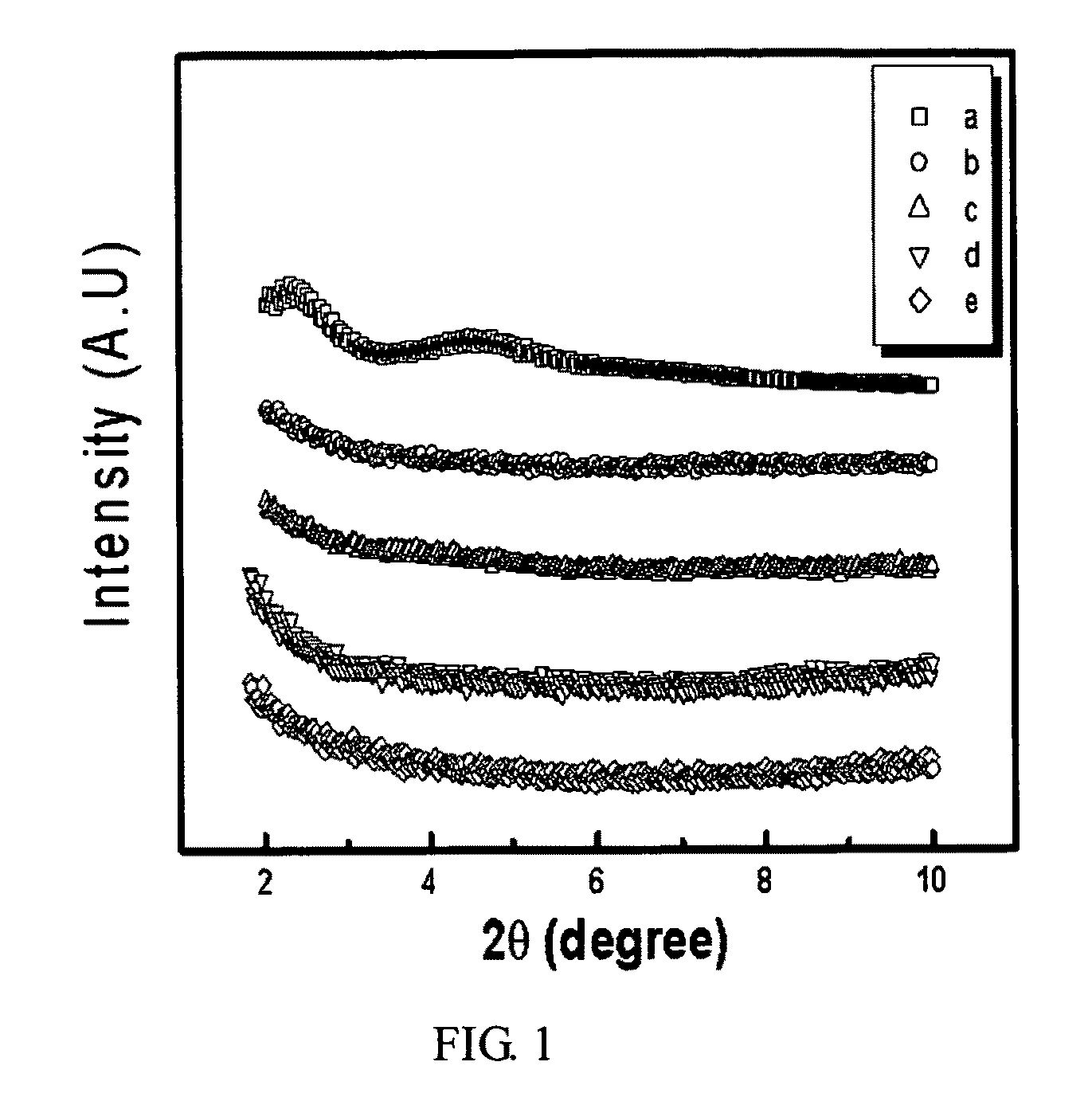Manufacturing method of organic modifer-free exfoliated nano clay-polymer composite
a nano clay polymer and exfoliation technology, applied in the field of polymer composite manufacturing, can solve the problems of adversely affecting the nanocomposite, difficult to obtain a polymer nanocomposite having a desired level of improved physical properties, and difficult to add clay nanoparticles during the manufacture of the polymer nanocomposite, so as to achieve the effect of maximizing the improvement of physical properties of the composi
- Summary
- Abstract
- Description
- Claims
- Application Information
AI Technical Summary
Benefits of technology
Problems solved by technology
Method used
Image
Examples
example 1
[0032]Smectite clay nanoparticles, organic-modified by polyoxypropylene methyl diethyl ammonium, are dispersed in 140 g of acetone, the dispersed amount being 80 wt % to polyethylene terephthalate. After this, 10 g of polyethylene terephthalate and 60 g of acetic acid are added, agitated for about one hour. Subsequently, the resultant product is dropped into 2000 ml of ethanol, and agitated for 12 hours or more, gone through precipitate filtration, washed and dried using vacuum at room temperature for 24 hours or more to manufacture a nanocomposite.
example 2
[0033]Mica clay nanoparticles, organic-modified by polyoxypropylene methyl diethyl ammonium, are dispersed in 140 g of acetone, the dispersed amount being 80 wt % to polyethylene terephthalate. After this, 10 g of polyethylene terephthalate and 60 g of acetic acid are added, and agitated for about one hour. Subsequently, the resultant product is dropped into 2000 ml of ethanol, agitated for 12 hours or more, gone through precipitate filtration, washed and dried using vacuum at room temperature for 24 hours or more to manufacture a nanocomposite.
contrast example 1
[0034]The organic-modified smectite clay nanoparticles of the comparison example 1 are added to achieve the content of 2.5 wt % said nanoparticles to polyethylene terephthalate, and melted at 270° C. and 80 rpm using a twin screw extruder to manufacture a polymer nanocomposite. A film is manufactured using the nanocomposite manufactured by the above-mentioned method.
PUM
| Property | Measurement | Unit |
|---|---|---|
| physical properties | aaaaa | aaaaa |
| physical property | aaaaa | aaaaa |
| surface area | aaaaa | aaaaa |
Abstract
Description
Claims
Application Information
 Login to View More
Login to View More - R&D
- Intellectual Property
- Life Sciences
- Materials
- Tech Scout
- Unparalleled Data Quality
- Higher Quality Content
- 60% Fewer Hallucinations
Browse by: Latest US Patents, China's latest patents, Technical Efficacy Thesaurus, Application Domain, Technology Topic, Popular Technical Reports.
© 2025 PatSnap. All rights reserved.Legal|Privacy policy|Modern Slavery Act Transparency Statement|Sitemap|About US| Contact US: help@patsnap.com


